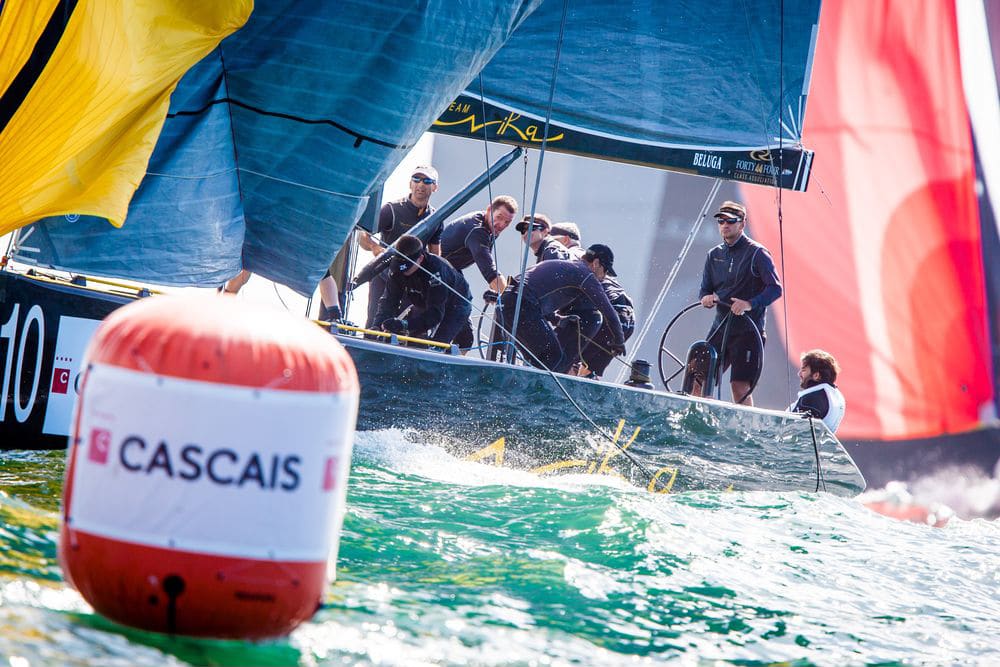
We’re approaching the leeward gates, in traffic. We want to go right up the second beat. What do we do?
This scenario presented itself to team Nika at a recent RC44 regatta in Cascais, Portugal. The reason it’s still fresh in my mind is because we chose poorly and basically did the exact opposite of what we should have done. This sore puppy dog is running down the beach.
The right-hand side of the racecourse (looking upwind) was favored and the entire fleet knew it. We were on a good layline for either gate mark. We could either lay straight into the right gate, or go for an early leeward drop for the left gate (looking downwind). We were sitting in seventh and had enough space to round the left gate, if properly executed, or go straight in to the right gate, sail for 100 meters on starboard and start the long progression on port tack to the right-hand side of the racecourse.
The decision onboard was to do the early leeward drop, sail slightly wide of the mark and take the left gate. In theory, a well-executed wide-and-jibe would have/should have been good. But, there was some risk as we were three deep in line for the left gate. That was the first mistake. If you’re rounding three deep, you’re relying on boats in front poorly executing. That wasn’t a high-percentage move for Nika. Our next mistake was poorly executing the turn. We went slightly too far and instead of being just shy of a close-hauled course to the left gate we sailed too far and left space between us and the mark. This inevitably set us up to be in the gas of the boat in front and having to do a clearing tack—going left.
The counter move, of course, was going straight to right gate! This was a higher percentage move, from a risk-reward perspective. There’s was a reasonable chance that we could have picked off a boat at the opposite gate that had a bad rounding or got tangled in traffic. But more importantly, we could have set ourselves up up for the longer term. While sailing the extra distance to get the clear lane, inevitably that distance can be gained back—and then some—by sailing fast in clear air and water, and in doing so, keeping it close up the second beat and minimizing distance lost.
In the heat of the moment, sometimes determining the risk and reward of these situations is tough, but balancing the aggressive move versus the right decision is a fine line. The moral to this story is to always be thinking “high percentage.” Inevitably, if you’re relying on the perfect execution of a maneuver to gain, chances it won’t happen!









